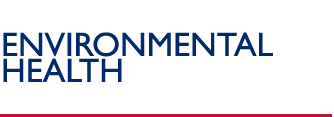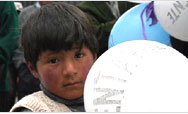USAID's Environmental Health Program History
USAID has a long history of supporting environmental health-related projects.
The Water and Sanitation for Health (WASH) Project (1981-1994) provided technical assistance in over 85 countries. WASH formed a key component of the U.S. Government (USG) response to and support of the International Water Decade declared by the U.N. in 1980. It evolved considerably during the period of implementation, from a focus mainly on hardware (e.g. pumps, pipes, and their operation and maintenance) to the implementation of cutting-edge approaches for ensuring community participation and management as well as for achieving sustained behavior change. Indeed, the key WASH legacy to the environmental health field was the articulation of a rigorous process for engagement of communities and ensuring the sustainability of investments in water supply and sanitation.
The Vector Biology and Control (VBC) Project (1983-1993) provided technical assistance to USAID on a broad range of tropical disease issues, with an emphasis on malaria, dengue, schistosomiasis, and guinea worm disease. An innovative program feature of VBC was the use of diverse mechanisms (a contract, an interagency agreement with CDC, and a grant to WHO) to gain synergy from collaboration across key institutions. The contribution of VBC to the Global Malaria Strategy in the early 1990s, along with its contributions to the insecticide-treated bednet efficacy trials, helped to mainstream malaria programs within public health, child survival and, ultimately, USAID infectious diseases programming.
The Environmental Health Project (EHP), which started in 1994 and for which USAID Bureau for Global Health funding ended in September 2004, was initially envisioned as a significant expansion in scope beyond the WASH and VBC projects, with attention to new-to-USAID environmental health topics, such as urban air pollution and lead exposure. However, with the establishment of central strategic objectives in 1994, core resources for EHP were focused on activities which directly supported child health and, later, malaria objectives, i.e. a strong mandate for the continuation of main lines of work established under WASH and VBC.
Another important dimension of EHP was the increasing emphasis on health impact. Activities in environmental health are now well integrated with health sector programming within USAID, while at the same time maintaining a necessarily distinct sphere of technical expertise. The integrated package of technological, social, and behavioral interventions at the center of EHP programs was designed to maximize impact on health. The approach of focusing on health impact in water and sanitation programs, using behaviors as the relevant proxy, and using "hardware" and "software" to achieve sustained behavior change, has achieved general acceptance among several of USAID's key development partners, such as the United Nations Children's Fund (UNICEF).
EHP funding over the ten-year period 1994-2004 was approximately $107 million with activities in 52 countries. Roughly one-fourth of the total funding was core funds from USAID's Bureau for Global Health (and the previous Global Bureau Center for Population, Health and Nutrition), and the balance has come from Missions and other Bureaus.
The EH activity design responds directly to current USG and USAID policy initiatives. The January 2003 USAID report Foreign Aid in the National Interest highlighted that "progress in health is not just in health programs." This design relies on active collaboration with other sectors, especially those involved in infrastructure provision, to achieve the objectives of the Activity. The Millennium Development Goals, which include targets in improving child survival and increasing access to safe water supply are directly related to the EH objectives, as is the global target on sanitation, agreed to by the USG at the World Summit on Sustainable Development in September 2003. The USG has responded with several new partnerships and initiatives, including the Water for the Poor Initiative, the Partnership for Clean Indoor Air, Safe Water Systems, and new efforts to revitalize child survival programming.
|


